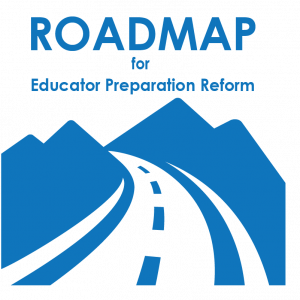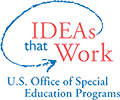
Share this Guide
Step 1: Engage Key Leaders

Reform cannot happen without the support of strong leaders. Engaging key leaders early in the EPP reform and continuous improvement process lays a strong foundation for sustainability and helps inform and prepare faculty to participate in the reform efforts and navigate change.
Outcomes:
- EPP leaders, including faculty and administration, have been identified and are in support of engaging in program reform and continuous improvement.
- An initial steering committee consisting of key leaders has developed a long-term vision for program improvement for the EPP.
- The steering committee is able to articulate how these improvement efforts will benefit the EPP and key stakeholders.
Steps
Step 1.1 Establish a Steering Committee
Guiding Questions
- Who are the key leaders within the EPP responsible for program effectiveness (e.g., deans, associate deans, etc.)?
- Who are the key leaders involved in the day-today administration of the EPP (e.g., program chairs, department chairs, etc.)?
- Who are the faculty within the EPP responsible for program accreditation/approval?
- Who are the “early adopters” among EPP who will be most likely to champion program reform and continuous improvement efforts?
- Which faculty are eager to take on additional leadership opportunities?
- Are faculty who are frequently engaged in district partnership efforts (e.g., clinical faculty) available and interested to engage in program reform work?
- Are there faculty who have existing research agendas focused on educator preparation improvement who might be interested in leading program reform and continuous improvement efforts?
- How can teacher candidates and/or recent graduates be involved in steering program reform and continuous improvement efforts?
Step 1.2 Generate Support and Buy-In
Guiding Questions
- How can EPP reform and continuous improvement:
- Support broad institutional goals?
- Address institutional challenges?
- Support the requirements of program approval/accreditation?
- Strengthen the partnerships with local districts?
- What incentives exist for EPP leaders to support program reform and continuous improvement efforts? What considerations support the timing of these efforts?
- Who are the faculty with influence across multiple departments who can support developing buy-in and engagement from faculty in those departments?
- How can programs or departments with established cultures of trust be leveraged to create interest and buy-in for program reform and continuous improvement efforts?
- How can relationships with EPPs and faculty at other institutions (e.g., relationships fostered through national faculty networks) be leveraged to help our EPP create interest and buy-in for the program reform and continuous improvement process? Are there other EPPs or faculty who have engaged in this process that we could learn from?
- How can “early adopters” help to cultivate more interest and engagement from other faculty?
- How will we handle faculty who seem hesitant or resistant to the idea of program reform?
- Who are our local district partners who might be interested in working with us to reform preparation program curriculum?
Step 1.3 Communicate a Vision for Reform
Guiding Questions
- What is our long-term vision of success for our EPP? How can program reform and continuous improvement support this vision?
- How will we reach a common understanding of our vision:
- Across disciplines?
- Between methods and field faculty?
- Between EPP faculty and district partners?
- What is our EPP’s mission? How will our team communicate our mission?
- Why is program reform and continuous improvement important for our success? How does it support the mission of our program, college, or university?
- How does program reform align to the mission of our state education agency and local districts, especially if the team includes external stakeholders?
- What are our EPP’s expected long and short-term outcomes from engaging in program reform?
- Why is our EPP engaging in program reform right now? Why is the timing right?
- What messages will resonate with faculty about program reform and continuous improvement? How will leaders consistently communicate these messages?
- How will we establish a consistent message about the need for program reform and the benefits of continuous improvement? Can the leaders involved in visioning efforts articulate the message and what it means for their collective and individual work?
- How are we articulating the benefits of engaging in program reform and continuous improvement to multiple audiences (e.g., faculty, adjuncts, clinical supervisors, leaders, etc.)?
- What infrastructure or communication strategies exist to keep faculty and stakeholders informed about program reform and continuous improvement efforts?
- How will we maintain team momentum during the visioning stage while interest and engagement are high?
Resources

Active Implementation Frameworks:
- Creating an Implementation Team: Helps to identify appropriate representatives to include on a team such as a program reform steering committee.
- Communication Protocol Worksheet: Designed to help teams develop linked communication protocols between different groups of stakeholders to promote systems alignment and a transparent feedback process.
Leading By Convening (Ensuring Relevant Participation):
- Leading by Convening Blueprint: A blueprint for authentic engagement
Other:
- Center on Great Teachers & Leaders Moving Toward Equity Stakeholder Engagement Guide: Engages stakeholders in understanding challenges, setting priorities, raising awareness, taking action, measuring progress, and adjusting strategies.
- CEEDAR Center “Leading and Engaging Faculty in Teacher Preparation Reform: The Role of Deans”: Highlights the influential role of deans play and summarizes the action steps deans can take to mobilize and support faculty in reforming teacher preparation. The Appendix includes a series of resources to support deans.
Examples
- As part of their engagement with CEEDAR, the Kentucky state leadership team launched Kentucky Excellence in Educator Preparation (KEEP), an initiative in which key influencers from 18 EPPs and several local districts came together to lead the efforts for preparation policy and practice reform (see UK Partners to Prepare Excellent Teachers Across Kentucky). To garner increased stakeholder engagement and buy-in, the KEEP team established a strategic communications plan that leveraged partner communication outlets to share key messages (e.g., the Commissioner of Education’s policy blog, the Kentucky Department of Education’s Kentucky Teacher bulletin board, the Education Professional Standards Board newsletters, and the Kentucky Association of Colleges for Teacher Education).
- The New Hampshire state leadership team engaged and leveraged the New Hampshire Institutions of Higher Education (IHE) Network, a consortium of EPPs in the state, in their initial efforts and took critical steps to integrate goals across initiatives by creating an alignment framework. Most recently, the initiative was reframed as The New Hampshire Educator Effectiveness for Student Success and added new membership to expand stakeholder representatives (e.g., the New Hampshire Education Association, the New Hampshire Association of Special Education Administrators, the New Hampshire Principal Association, a principal, new state department members, and a student in the special education preparation program at New Hampshire’s Community College Program).
- The Ohio state leadership team leveraged an existing infrastructure—the Ohio Deans Compact on Exceptional Children—to advance efforts to revise preparation program and policy as part of its CEEDAR Center collaboration. This overview illustrates how the compact leveraged strategic engagement from critical stakeholder groups (e.g., the Statewide P–16 Collaborative, the Ohio Clinical Alliance, statewide educator associations, the Ohio Education Association, the Ohio Parent Teacher Association, private foundations).
- Faculty at the University of West Florida discussed how to make sure that EPP reform was a faculty-led process. In addition, state CEEDAR Center efforts and resources are shared in a regular newsletter, Plugging In, for the state of Florida’s IHE teacher education faculty.
- In an effort to gain Montana stakeholder buy-in, the team undertook a 2-year process to systematically collect focus group and survey data from Montana educator stakeholders across all levels and areas of Montana’s educational landscape (Montana EPPs, the Montana Council of Deans, the Montana Advisory Council for Indian Education, and teachers and leaders across all Montana regions) regarding what knowledge and skills new teachers and leaders need to have upon exit from EPPs. These data were used to make decisions regarding the focus of EPP reform.


